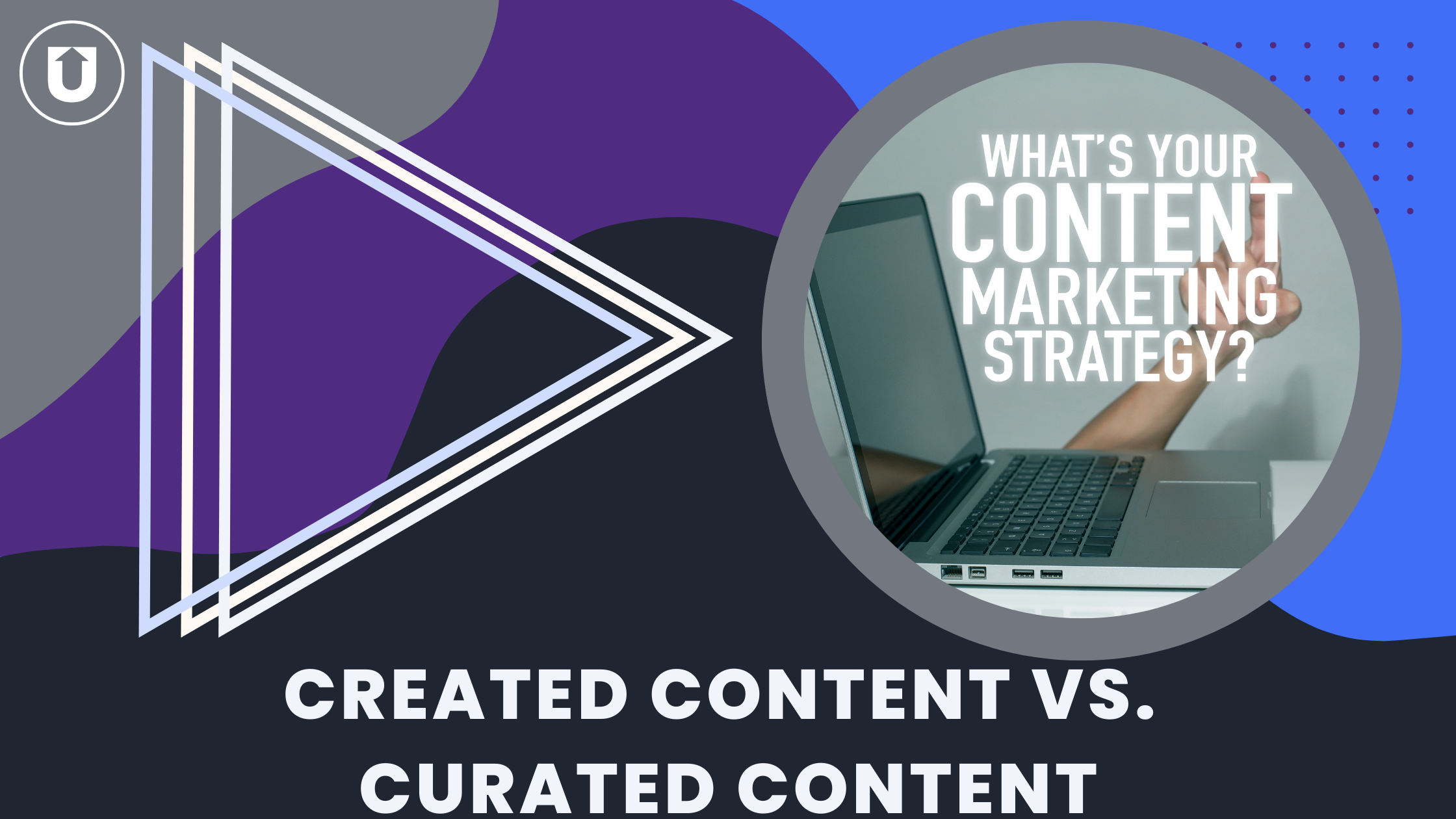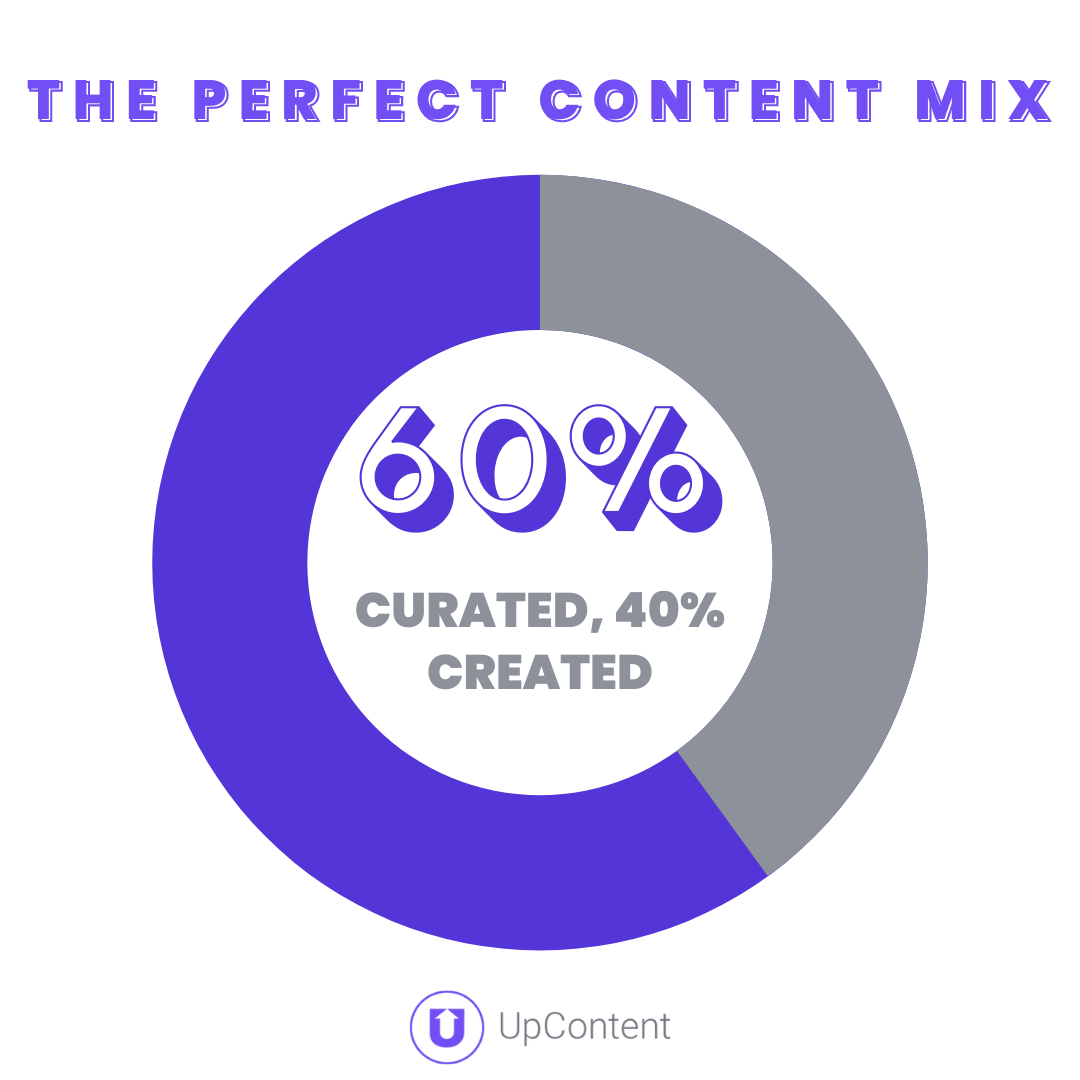Created Content vs. Curated Content: Which One Is Right For You? Pros and Cons to Help You Decide

Since the beginning of humankind, people have been creating content.
Cave paintings, hieroglyphics, and art were some of the first ways humans were able to communicate messages to each other.
But it wasn’t until 1996 when John F. Oppedahl used the term “content marketing” for the first time, and businesses took to the internet to pursue their customers on a new frontier.
So here you are, 26 years or so later, building or expanding your content marketing strategy.
You’ve come across content creation and curation, and you’re asking, “Aren’t they the same thing?” or “Which one is best for my marketing goals?”
Actually, content creation and curation are pretty different, and they both have some great benefits for your overall marketing strategy.
Here at UpContent, we have used both content approaches. Our origin story begins in a marketing firm, so we understand how hard it is to find the perfect balance for your business.
So let’s take a look at content creation vs. content curation, the benefits and drawbacks of both, and which one is right for you.
What Is Content Creation?
Content creation is anything YOU create and share with your customers or prospects.
It could include a blog, a newsletter, emails, social media posts, infographics, ebooks, and downloadable PDFs; the list, my friend, is endless.
If you build it, it’s created content.
Any original thought or idea, or any topic you are the expert on, is a good candidate for created content.
Benefits of Content Creation
When you deliver created content specifically for your audience, whether by request or general knowledge of what is valuable content in your niche, you’re building trust.
People want to consume valuable content, and you are establishing your brand as a trusted resource by creating what they need or want - and can’t get elsewhere.
Creating your own content also helps with SEO and social media engagement, and it’s EXTREMELY reusable.
If you’re creating content and only using it in one place, you’re doing it wrong.
Break it down into multiple social media posts, create a transitional CTA with a downloadable PDF, or use the written content as a script for a video.
Content creation is diverse and keeps you top of mind with your customers!
Drawbacks of Content Creation
Content creation is time-consuming. It just is.
It takes time to develop ideas, research, write, design, edit, approve, and use the content.
It’s also really hard to keep up with the demand for content. With information available 24/7/365, the shelf life decreases, especially for social media.
Also, having someone dedicated to ONLY creating content for your business is hard to justify for many small to midsize companies.
And what if that one person doesn’t write well or has no graphic or social media experience?
You have to outsource or hire more people simply to maximize the benefit of the investment you are already making, but only creating content will lead you right where we were a few paragraphs ago - Only creating content also limits your voice to just you.
While having some created content is key to building trust, ONLY creating content will diminish the trust your customers have in you because they will feel the need to validate what you are saying with other thought-leaders.
This takes time, elongates the decision process, and may cause your prospects to be come distracted or fatigued rather than focusing on the decision-at-hand.
What is Content Curation?
Content curation is the process of sharing relevant third-party content with the intent of showcasing thought leadership.
You can curate content in many ways, including for your blog, social media, and newsletter.
Content curation is the perfect solution when a topic is relevant to your business or your audience, but you don’t specialize in a subject matter enough to have your own original thought or idea.
In these cases, what you would create will end up sounding a lot like the research you did to create the piece - providing your readers with little value.
Benefits of Content Curation
With content curation, you establish trust and deepen relationships with your audience in a whole new way.
Sharing someone else’s report or perspective on a topic allows you to demonstrate that you are:
- Keeping up with your industry.
- Open to listening and sharing someone else’s opinion.
- Thinking about what your customers make enjoy or find valuable - even if it didn’t come from your pen (or keyboard).
Curation helps tell your brand’s WHOLE story by expanding on thoughts and ideas of others while giving context to what you are saying in your own content.
You’re not just dumping RSS feeds on people and having them wade through all that garbage to find the articles that might interest them.
When you curate content, you’re looking at content about the topics you have or want to have authority in and care about, picking out the best content from those topics, adding your perspective, and then sharing that with your audience.
Now they’re not only learning something from the original author, but they’re also learning more about you and how you approach that topic because of how you’re presenting it.
Drawbacks of Content Curation
If you only share curated content, you are cutting off your voice - which is essential in building your brand, trust, and presence.
If all you do is curate content, your audience will recognize that you’re reading cool stuff and have good ideas, but they don’t understand how that translates to your business and what you can do for them.
Which One Is Right For You?
Studies have shown that a mix of created and curated content is one of the best practices for any content marketing strategy.
Curated content receives 33% more engagement than created content on social media as it draws in your audience and stimulates them to act, and created content has a 54% higher click-to-conversion rate when it points to your website by activating this now-engaged audience.
The sweet spot marketers have traditionally found?

Sixty percent curated content and forty percent created content is a blend made in heaven for your content marketing strategy.
You would need to try mixing on your own, track which blend of content is performing best, and analyze what your audience is responding to.
Remember, each piece should not be evaluated in isolation. It is about how created and curated play with one another in driving business value.
It’s not about “Which one is better for me.” It’s about finding “What mix is right for me?”
Next Steps For Using Created and Curated Content
Having a content marketing strategy is essential, and it’s not easy to perfect.
Best practices are evolving, and it’s hard to keep up with the demand when you’re only creating your own content.
Curating all of your content for your strategy is probably sending people farther away, defeating the purpose of content marketing, so blending the two techniques makes the perfect couple.
UpContent automates finding and distributing the right curated for your business with technology designed to partner with any platform you use because curating content should support, not take away from content creation.
If you’re interested in learning more about how to blend your creation and curation strategies, check out this free webinar to develop a strategy you can use RIGHT NOW.
You can also learn more about content curation by checking out the resources below:



